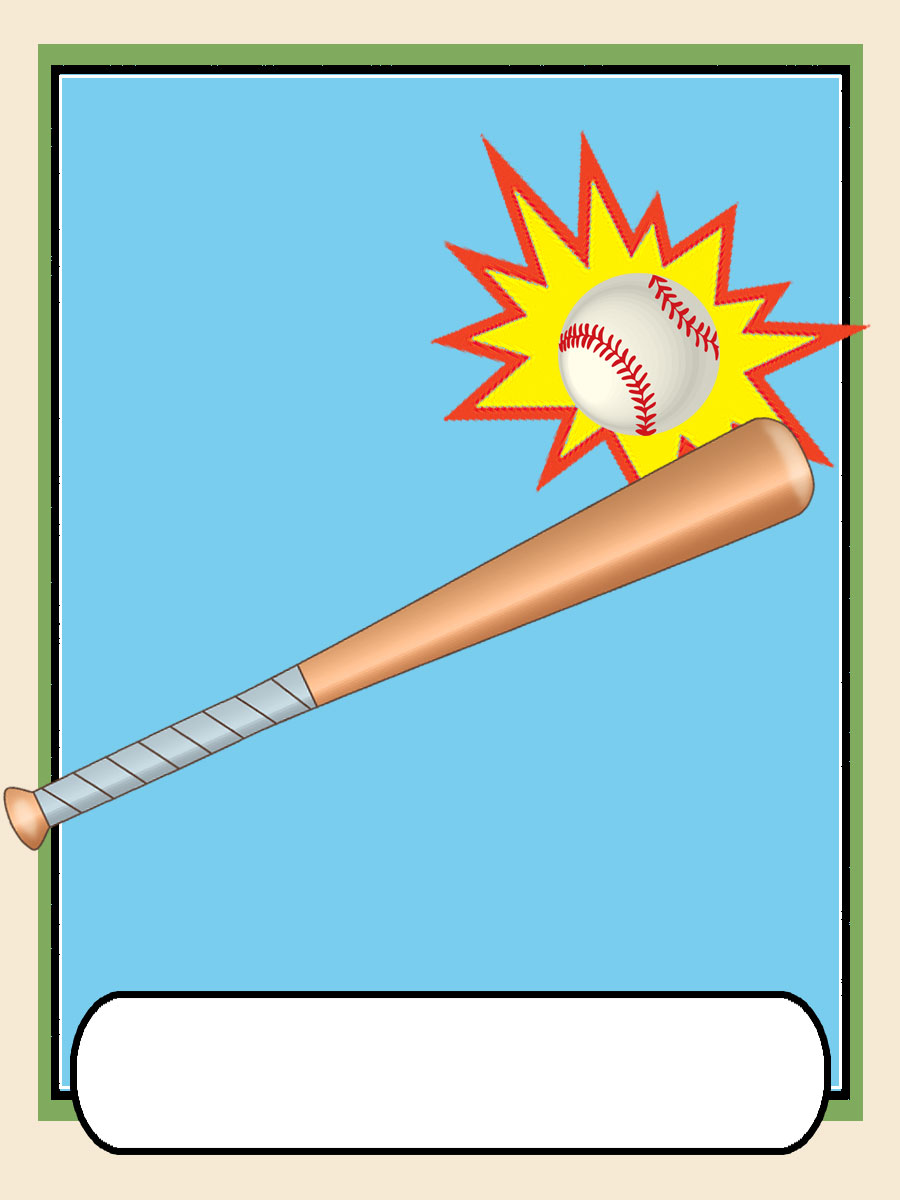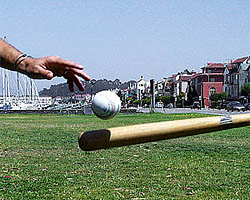
Minimizing Handle Forces
A baseball bat has three "sweet spots"; one of them is called its center of percussion (COP). That's physicist talk for the point where the ball's impact causes the smallest shock to your hands. If you hit a baseball closer to the bat's handle than to the center of percussion, you'll feel a slight force pushing the handle back into the palm of your top hand. If you hit the ball farther out than the COP, you'll feel a slight push on your fingers in the opposite direction, trying to open up your grip. But if you hit the ball right on the COP, you won't feel any force on the handle. To find the COP on a bat, try this simple activity.
What You Need
- A bat
- A ball
- A friend
Directions
When you hold a bat with your hands at the bottom of the handle (a normal grip), the COP is located about six to eight inches from the fat end of the bat. If you choke up on the bat, the COP moves closer to the fat end. That's because the location of your top hand is the place you want the bat to pivot. Changing your hand's position on the bat changes where that pivot point is, which therefore changes the position of the COP to one that corresponds to the new pivot point.
To find the COP on a bat, hold it parallel to the ground in your hand. Make sure you hold it at the same place you normally do when playing a game. It's easier to feel the push if you hold the bat with only one hand; a two-handed grip helps to counteract the push in either direction. But be sure to hold it with the top hand in its "normal" position, no closer to the handle knob than you normally put your top hand. Close your eyes, so you can concentrate on the sensations you feel with your hand.

Have a friend throw a ball at the bat from a few inches away, starting at the end farthest from your hand and moving down the bat. The harder he or she can throw it, the better (as long as they're able to control where on the bat they're throwing the ball). Notice how the bat feels in your hand as the ball hits it. When we tried this at the Exploratorium, we could feel both a vibration and a force pushing on our hands. The amount of vibration and "push" varied, depending on where on the bat the ball hit. Some of us found it a little hard to distinguish between the two feelings, but if you can, the COP is where you feel the smallest push on your hand.
What's Going On?
A bat is essentially a long stick. When you hit a stick off center, two things happen: The entire stick wants to move straight backward, and it also wants to rotate around its center. It's this tendency to rotate that makes the bat's handle push back on or pull out of your hands.
When the ball hits the bat's COP, you don't feel a push or pull as the bat tries to spin. That's because when the bat spins, it pivots around one stationary point. When you hit a ball at the COP, the stationary point coincides with where your top hand is. So your hand feels no push one way or the other.
This is important if you want to hit the ball a long way. Every time you hit a ball at a point that's not the COP of your bat, some of the energy of your swing goes into moving the bat in your hands, not to pushing the ball so that it moves away from you farther and faster. If less of the bat's energy goes to your hands, more of it can be given to the ball.